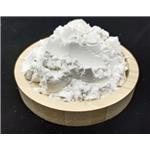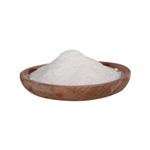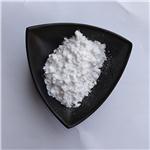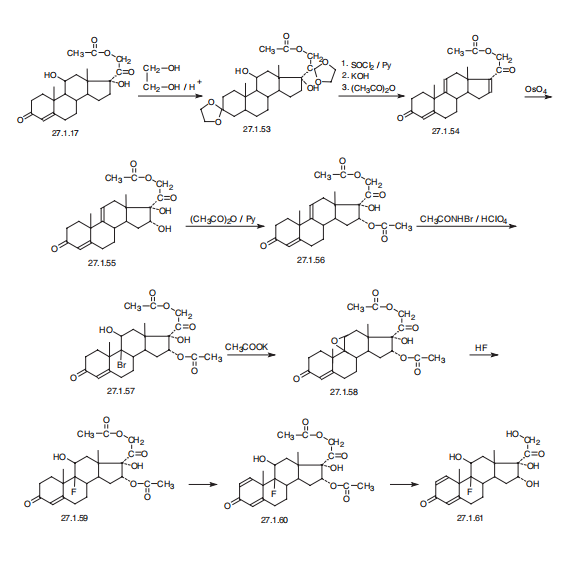- Triamcinolone
-

- $0.00 / 1kg
-
2024-04-20
- CAS:124-94-7
- Min. Order: 1kg
- Purity: 99%
- Supply Ability: 20tons
- Triamcinolone
-

- $100.00 / 1kgkg
-
2023-09-20
- CAS:124-94-7
- Min. Order: 1kgkg
- Purity: 0.99
- Supply Ability: 100
- Triamcinolone
-

- $0.00 / 1KG
-
2023-09-06
- CAS:124-94-7
- Min. Order: 1KG
- Purity: 99%
- Supply Ability: 500000kg
|
| | Triamcinolone Basic information |
| Product Name: | Triamcinolone | | Synonyms: | 9α-Fluoro-16α-hydroxyprednisolone;9α-fluoro-11β,16α,17,21-tetrahydroxy-1,4-pregnadiene-3,20-dione;TRIAMCINOLONE,USP;11b,16a,17a,21-Tetrahydroxy-9a-fluoro-1,4-pregnadiene-3,20-dione;11b,16a,17a,21-Tetrahydroxy-9a-fluoro-D1,4-pregnadiene-3,20-dione;31: PN: US20030109453 SEQID: 30 claimed sequence;9a-Fluoro-11b,16a,17,21-tetrahydroxypregna-1,4-diene-3,20-dione;9a-Fluoro-11b,16a,17a,21-tetrahydroxypregna-1,4-diene-3,20-dione | | CAS: | 124-94-7 | | MF: | C21H27FO6 | | MW: | 394.43 | | EINECS: | 204-718-7 | | Product Categories: | Biochemistry;Hydroxyketosteroids;Intermediates & Fine Chemicals;Pharmaceuticals;Steroid and Hormone;ARISTOCORT;Steroids;API | | Mol File: | 124-94-7.mol |  |
| | Triamcinolone Chemical Properties |
| Melting point | 262-263 °C(lit.) | | Boiling point | 587.5±50.0 °C(Predicted) | | alpha | 69 º (c=2, DMF) | | density | 1.1703 (estimate) | | storage temp. | 2-8°C | | solubility | DMF: soluble20 mg/mL | | pka | 11.57±0.70(Predicted) | | color | Crystals | | optical activity | [α]25/D +69°, c = 2 in DMF | | Water Solubility | 79.99mg/L(25 ºC) | | Merck | 9595 | | InChIKey | GFNANZIMVAIWHM-OBYCQNJPSA-N | | CAS DataBase Reference | 124-94-7(CAS DataBase Reference) | | NIST Chemistry Reference | Triamcinolone(124-94-7) | | EPA Substance Registry System | Triamcinolone (124-94-7) |
| | Triamcinolone Usage And Synthesis |
| Description | A natural extension of corticoid research involved examination of compounds containing both a 9α-fluoro group
and a double bond between positions 1 and 2. Triamcinolone (9-fluoro-11β, 16α, 17, 21-tetrahydroxypregna-
1,4-diene-3,20-dione), introduced in 1958, combines the structural features of a ?1
-corticoid and a 9α-fluoro
corticoid. As mentioned previously, the 9α-fluoro group increases the anti-inflammatory potency,
but it also markedly increases the mineralocorticoid potency. This is undesirable if the drug is to be used
internally for the treatment of rheumatoid arthritis. By inserting a 16α-hydroxy group into the molecule, one can
decrease the mineralocorticoid activity. | | Chemical Properties | White, crystalline powder. Insoluble in water; slightly soluble in usual
organic solvents; soluble in dimethylformamide. | | Originator | Kenacort,Squibb,US,1958 | | Uses | A glucocorticoid, antiasthmatic (inhalant); antiallergic (nasal). | | Uses | Triamcinolone is a glucocorticoid. Triamcinolone is used as an antiasthmatic (inhalant); antiallergic (nasal). | | Indications | Intralesional bleomycin, a cytotoxic drug that inhibits DNA synthesis, is effective
for all varieties of recalcitrant warts. Various concentrations of the drug have
been used, although the total dose must be carefully tracked over time to avoid
potential systemic toxicity. | | Definition | ChEBI: A C21-steroid hormone that is 1,4-pregnadiene-3,20-dione carrying four hydroxy substituents at positions 11beta, 16alpha, 17alpha and 21 as well as a fluoro substituent at position 9.
sed in the form of its 16,17-acetonide to treat various skin infections. | | Manufacturing Process | Preparation of δ1,4-Pregnandiene-9α-fluoro-11β,16α,17α,21-Tetrol-16,21-
Diacetate: An agar slant of Corynebacterium simplex was washed with 5 ml of
sterile saline and the spore suspension added to 100 ml of Trypticase soy
broth in a 500 ml Erlenmeyer. The mixture was incubated at 32°C for 8 hr and
1 ml was used to inoculate 10 flasks, each containing 100 ml of Trypticase soy
broth. The flasks were incubated with shaking at 32°C for 16 hr. 20 mg δ4-
pregnene-9α-fluoro-11β,16α,17α,21-tetrol-3,20-dione16,21-diacetate
dissolved in 2 ml ethanol was added and the flasks pooled. This solution was
extracted several times with methylene chloride, washed with saturated saline
and evaporated under reduced pressure. The residue was dissolved in
methanol, treated with activated charcoal, filtered through diatomaceous earth
and reevaporated to afford 277 mg of oil and acetylated overnight.
Paper strip chromatography showed approximately equal amounts of substrate
and a more polar product (δ1,4-pregnadiene-9α-fluoro-11β,16α,17α,21-tetrol-
3,20-dione 16,21-diacetate) together with very small amounts of two less
polar products. Partition chromatography of 0.25 gram of the residue
(diatomaceous earth column; system: 2 parts ethyl acetate, 3 parts petroleum
ether (90° to 100°C), 3 parts methanol and 2 parts water) separated the less
polar products and the substrate. The desired most polar product remained on
the column and was eluted with 500 ml of methanol. The residue (90 mg)
from the evaporated methanol was repartitioned on diatomaceous earth
[system: 3 parts ethyl acetate, 2 parts petroleum ether (90° to 100°C), 3
parts methanol, and 2 parts water] and the cut containing the desired product
(determined by ultraviolet absorption spectrum) was evaporated under
reduced pressure to afford 18 mg of solid.
Crystallization from acetone-petroleum ether gave 13 mg of colorless needles
of δ1,4-pregnadiene-9α-fluoro-11β,16α,17α,21-tetrol-3,20-dione16,21-
diacetate; melting point (Kofler block) about 150° to 240°C with apparent loss
of solvent at 150°C. Recrystallization from acetone-petroleum ether did not
alter the melting point.
Preparation of δ1,4-Pregnadiene-9α-Fluoro-11β,16α,17α,21-Tetrol-3,20-Dione:
A solution of 100 mg of δ1,4-pregnadiene-9α-fluoro-11β,16α,17α,21-tetrol-
3,20-dione16,21-diacetate was dissolved in 10 ml of methanol and cooled to
0°C. After flushing with nitrogen, a solution of 35 mg of potassium hydroxide
in 2 ml of methanol was added to the steroid solution. After standing at room
temperature for 1 hour, the solution was neutralized with glacial acetic acid
and evaporated under a nitrogen atmosphere to a white solid. Water was
added, and after cooling, the product was filtered and washed with water to
afford 52 mg of δ1,4-pregnadiene-9α-fluoro-11β,16α,17α,21-tetrol-3,20-dione,
melting point 246° to 249°C. Three crystallizations from acetone-petroleum
ether gave 29 mg of the tetrol, melting point 260° to 262.5°C according to US
Patent 2,789,118. | | Therapeutic Function | Glucocorticoid | | Biochem/physiol Actions | Triamcinolone is a synthetic glucocorticoid agonist; induces gene expression and apoptosis; inhibits prostaglandin synthesis; impairs tumor necrosis factor (TNF)-α-induced degradation of κB-α; potentiates the differentiation-inducing effects of bone morphogenetic proteins (BMP-2, -4, -6). | | Clinical Use | Triamcinolone to be used topically is generally dispensed as its more potent and lipophilic acetonide, a
16α,17α-methylenedioxy cyclic ketal or isopropylidene derivative. It is effective in the treatment of psoriasis and other corticoid-sensitive dermatologic
conditions. Topically, triamcinolone acetonide is a more potent derivative of triamcinolone and is approximately
eight times more active than prednisolone. | | Side effects | Even though triamcinolone has an apparently decreased tendency to cause salt and water retention and edema
and may induce sodium and water diuresis, it causes other unwanted side effects, including anorexia, weight
loss, muscle weakness, leg cramps, nausea, dizziness, and a general toxic feeling. | | Safety Profile | Poison by subcutaneous route.An experimental teratogen. Other experimentalreproductive effects. Human mutation data reported.When heated to decomposition it emits toxic fumes of F??.An anti-inflammatory and antiallergic agent. | | Synthesis | Triamcinolone, 9a-fluoro-11b,16a,17,21-tetrahydroxypregna-1,
4-dien-3,20-dione (27.1.61), differs from dexamethsone in terms of chemical structure in that the a methyl group at C16 is replaced with a hydroxyl group. It is synthesized
from the 21-O-acetate of hydrocortisone 27.1.17. In the first stage, both carbonyl groups
of this compound undergo ketalization by ethylene glycol. Next, the hydroxyl group in
the resulting diketal 27.1.53 is replaced with chlorine using thionyl chloride, and
the product undergoes dehydrochlorination using an alkaline, during which the
21-O-acetyl group also is hydrolyzed. Acetylating the hydroxyl group once again
with acetic anhydride gives a triene 27.1.54. Reacting this with osmium tetroxide
gives the vicinal diol 27.1.55. The secondary hydroxyl group at C16 of this product
undergoes acetylation by acetic anhydride in pyridine, which forms the diacetate
27.1.56. Treating the product with N-bromoacetamide in chloric acid gives a bromohydrin
(27.1.57), which upon reaction with potassium acetate is transformed to an epoxide
(27.1.58). Opening of the epoxide ring, using hydrofluoric acid, gives the corresponding
9-fluoro-11-hydroxy derivative 27.1.59. Upon microbiological dehydrogenation, the
C1¨CC2 bond is oxidized to a double bond, forming triamcinolone acetate (27.1.60), the
acetyl group of which is hydrolyzed, forming the desired triamcinolone (27.1.61). 
| | Drug interactions | Potentially hazardous interactions with other drugs
Aldesleukin: avoid concomitant use.
Antibacterials: metabolism accelerated by rifamycins;
metabolism possibly inhibited by erythromycin;
concentration of isoniazid possibly reduced.
Anticoagulants: efficacy of coumarins and
phenindione may be altered.
Antiepileptics: metabolism accelerated by
carbamazepine, fosphenytoin, phenobarbital,
phenytoin and primidone.
Antifungals: increased risk of hypokalaemia with
amphotericin - avoid; metabolism possibly inhibited
by itraconazole and ketoconazole.
Antivirals: concentration possibly increased by
ritonavir.
Ciclosporin: rare reports of convulsions in patients
on ciclosporin and high-dose corticosteroids.
Cobicistat: concentration of triamcinolone possibly
increased.
Diuretics: enhanced hypokalaemic effects of
acetazolamide, loop diuretics and thiazide diuretics.
Vaccines: high dose corticosteroids can impair
immune response to vaccines; avoid with live
vaccines. | | Metabolism | Triamcinolone is metabolised largely hepatically but
also by the kidney and is excreted in urine. The main
metabolic route is 6-beta-hydroxylation; no significant
hydrolytic cleavage of the acetonide occurs. |
| | Triamcinolone Preparation Products And Raw materials |
|